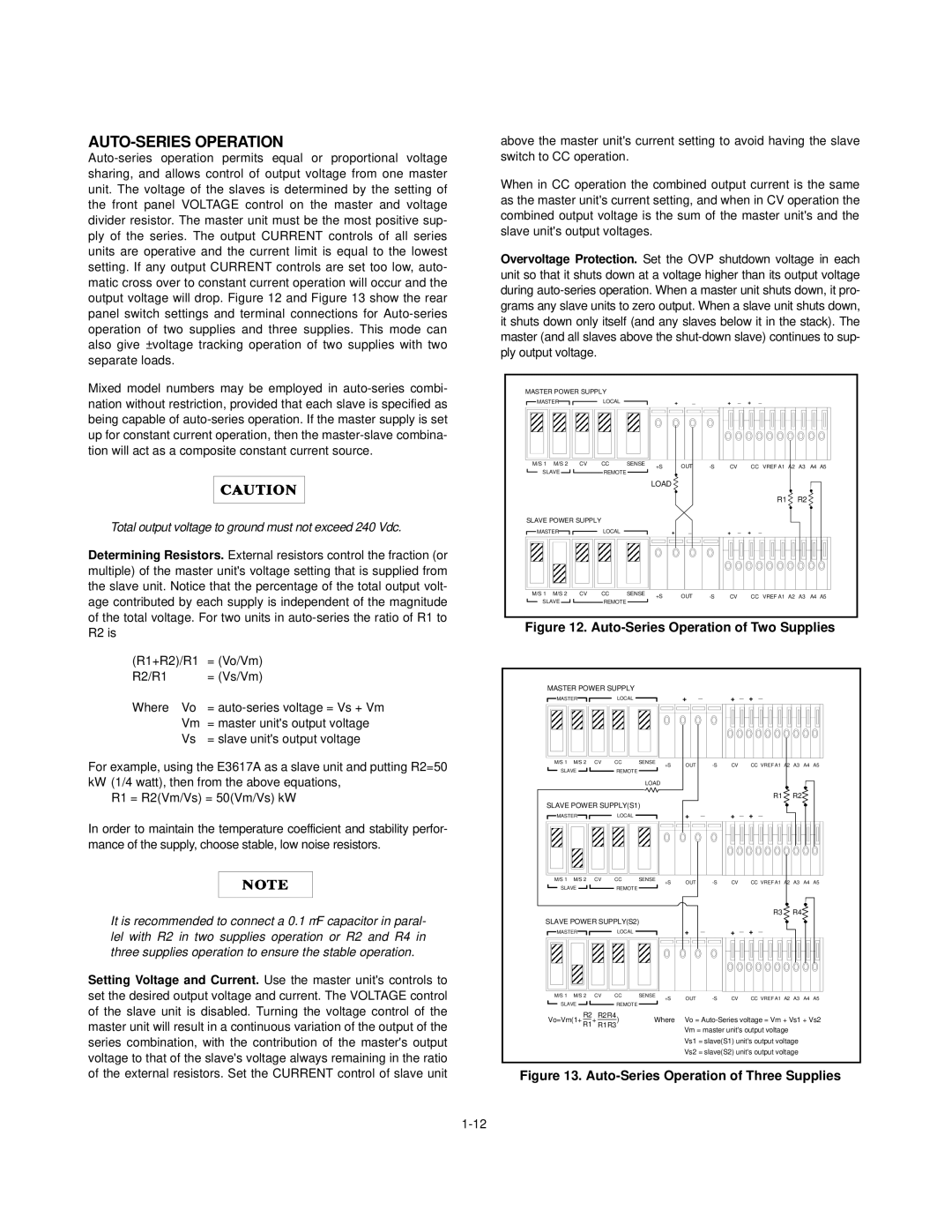Agilent E3614A Serials KR83503035, Agilent E3617A Serials KR83502522, Agilent E3615A Serials KR83506197, Agilent E3616A Serials KR83502651 specifications
Agilent Technologies is a leading player in the field of electronic test and measurement devices, providing essential tools for engineers and scientists. Among their array of power supplies, models such as the Agilent E3616A, E3615A, E3617A, and E3614A stand out for their exceptional performance, reliability, and technological features.The Agilent E3616A is a precision DC power supply known for its ability to deliver a maximum output of 60V and 3A. Its serial number, KR83502651, signifies its unique identity. This model is particularly valued in laboratory environments due to its advanced programming capabilities. It offers a comprehensive range of output voltage and current settings, making it versatile for various applications. One of its main features is the built-in 6V at 3A output, which can be useful for testing other devices.
Similarly, the Agilent E3615A, with the serial number KR83506197, provides an excellent blend of performance and functionality. It is capable of delivering up to 30V and 3A across its outputs. This model excels in its low noise operation, which is crucial for sensitive electronics testing. Furthermore, the user-friendly interface allows for quick adjustments and settings retrieval, making it a favorite among engineers. The E3615A is designed to support a wide range of applications, from component testing to powering devices in research settings.
The Agilent E3617A, identifiable by its serial number KR83502522, is another high-performance model that offers a maximum output of 30V and up to 3A. It features built-in read-back capabilities, enabling engineers to monitor the actual voltage and current supplied to the load. The E3617A stands out for its programmable output, allowing automated testing sequences to be implemented with ease.
Lastly, the Agilent E3614A, with the serial number KR83503035, is a cost-effective option without sacrificing quality. This model offers an output of up to 30V and 3A while maintaining stability and precision. Its compact design makes it easy to integrate into crowded workspaces or test setups. The E3614A is designed for durability, ensuring reliable performance over time, making it an excellent choice for both education and industrial applications.
With their high-precision outputs, easy programmability, and user-friendly interfaces, these Agilent power supplies serve as essential tools for a variety of testing and research needs, reflecting Agilent Technologies' commitment to quality and innovation in electronic measurement solutions.

